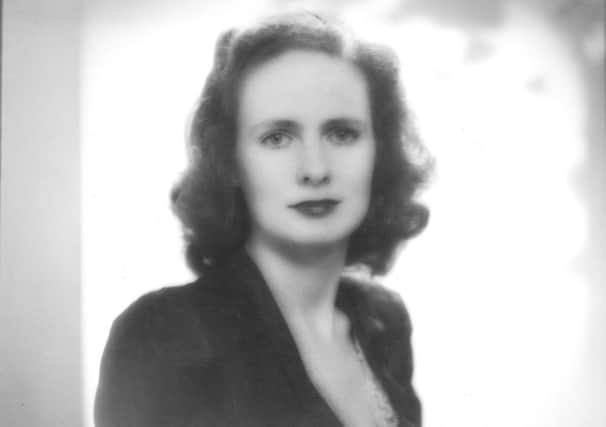Obituary: Patricia Davies, Bletchley operative


Patricia Davies initially worked at the Admiralty during the Second World War and was involved in one of the most daring, and successful, acts of military deception of the war.
She is thought to be the last survivor of Room 13, which developed an idea suggested by Ian Fleming – the future creator of James Bond. The plan was a simple but mighty harrowing undertaking.
Advertisement
Hide AdAdvertisement
Hide AdThe fact that it was activated with such precision was mainly thanks to the likes of Patricia Davies and her colleagues. It not only completely bamboozled the Nazis but, historians have suggested, was a vital element in winning the war.
Davies played a prominent part in those preparations. The rouse involved using a dead body which was carrying false military papers regarding the Allies invasion of Europe.
It was code-named Operation Mincemeat and has become one of the legends of the Second World War.
A successful 1956 film, The Man Who Never Was, captured the drama and starred Clifton Webb and Robert Flemyng.
Patricia Helen Davies (née Trehearne), always known as Pat, grew up in Surrey, Sussex and Devon. Her father was a lawyer and the family employed an Austrian cook from whom Davies learnt fluent German.
From 1936–39 she attended Roedean School in Sussex, where she was prominent both academically and in sports – especially tennis and lacrosse.
In 1941 she volunteered for the WRNS but was soon transferred to the team at Naval Intelligence who were planning the audacious Operation Mincemeat. It was a cunning deception, conceived by Fleming with typical flair and daring. It set out to convince the Germans that the Allies would invade Europe from North Africa through Greece and not via Sicily and Italy.
Hitler bought the story totally and panzer divisions were immediately dispatched to Greece.
Advertisement
Hide AdAdvertisement
Hide AdThe preparations for Operation Mincemeat were intense. A body of a vagrant was found in a London mortuary and given the papers of (a fictional) Royal Marines officer called Major William Martin.
In a briefcase chained to his wrist were top secret letters about troop deployments in Greece along with personal papers of “Major Martin”.
The corpse was packed with dry ice into a metal container and driven north to the Holy Loch. It was taken out to the submarine, HMS Seraph, whose crew had been told it was some sophisticated weather reporting equipment. Eleven days later the submarine surfaced and left the body floating in the sea.
Davies recalled later: “I forged the letters between the generals. There was a photo of the girlfriend. I remember being rather annoyed not being asked to do that as well.”
Personal papers, bank statements and a theatre ticket were found on the Major when he was pulled out of the Mediterranean by a German spy. The operation was one of the most successful deceptions of the war.
Davies was then transferred to Bletchley Park, the famous deciphering headquarters that was breaking the German High Command’s messages by use of the Enigma code.
Trehearne recalled years later: “Everything was incredibly hush hush. The intercepts used to come by tele-printer into the little office we called the Citadel.”
In 2010 Davies, still a vivacious and colourful character, was interviewed by the author Ben Macintyre when he was making a television version of his book on the subject.
Advertisement
Hide AdAdvertisement
Hide AdThe programme, called Operation Mincemeat, brought to life the exacting planning of the entire event and Davies’ memory did much to add a real feeling of authenticity and atmosphere.
Davies recalled: “It was a time of high excitement and intrigue, where no detail was left out and where everyone had a hand in creating a fantastical plot.”
Her work at Bletchley was no less arduous or secretive. Her section was principally involved in monitoring the German navy and despite the huge staff working at Bletchley it was a tribute to the tight security maintained by everyone that the Germans were totally unaware of its existence.
“All the transcriptions had to be right first time,” Davies said. “Some of the signals were feint and sometimes corrupted.”
Her future husband, Paddy Davies, had been evacuated from Sicily soon after the invasion. The two met in London at a dance. She was with a party were very much enjoying themselves and he was in a teetotal group. He asked her to dance and got invited back for a glass of Champagne.
On VE Day, 8 May, 1945, the two went to Buckingham Palace to see the King and Queen with the two young princesses and Winston Churchill on the balcony. Davies proposed there and then.
After the war her husband was a successful businessman acting as chairman of Yardley’s for several years. He died in 2010.